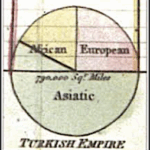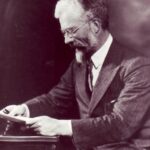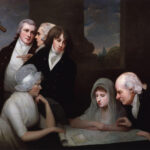The idea for this blog first came to me while I was preparing a talk for the Public Communication of Science and Technology (PCST) conference in Aberdeen in May 2025. As with all other public and academic lectures I’ve given over the years, I spent quite a bit of time writing up and preparing the slides for this one (choosing the imagery for a presentation alone can take me hours, but that’s partly because I love browsing through Renaissance and Baroque paintings!). I was busy working on another project and had no immediate plans to develop the material I’d put together for this talk into a scholarly publication. So, I was going to do the usual and chuck it into the ‘Miscellaneous’ folder on my drive where I keep all work-in-progress material, talks and presentation notes. But then I thought, why leave it in limbo when I could post it online where others could read it and, perhaps, even find it useful or inspiring? And, for that matter, why keep the rest of my ‘Miscellaneous’ collection hidden in a folder? Of course, writing a blog is not the same as getting published in a conventional media outlet but it’s a good way of keeping ideas alive.
Like my research career, this blog defies traditional ‘academic pigeonholing’. Here you can find pieces on the history of science, the history of science popularisation, the history of statistics and quantification and the history of British sociology. There are also reflections on the public understanding of science and science literacy, and entries inspired by my work in advanced quantitative methods, maths, data visualisation and data analysis in R.
Please note that the material in this blog is distributed under the terms of the Creative Commons Attribution-NonCommercial-NoDerivatives License, which permits non-commercial re-use, distribution, and reproduction in any medium, provided the original work is properly cited, and is not altered, transformed, or built upon in any way. Leave a comment on the blog entry page if you’d like to use any material published here.
- Painting by Numbers – the Pioneering Statistical Charts of William Playfair (1759-1823)
 Paintings and charts Paintings and charts have a lot in common. Like a painting, a statistical chart can be visually appealing, clear and with a good composition (or not!). Both paintings and charts convey information and can arouse emotions and stir the imagination. Understanding the meaning of both requires paying careful attention to detail and … Continue reading
Paintings and charts Paintings and charts have a lot in common. Like a painting, a statistical chart can be visually appealing, clear and with a good composition (or not!). Both paintings and charts convey information and can arouse emotions and stir the imagination. Understanding the meaning of both requires paying careful attention to detail and … Continue reading - The Evolution of Statistics in the Work of Karl Pearson (1857-1936) and R. A. Fisher (1890-1962)
 Who switched the light on? In the history of statistics, the period from 1885-1935 is known as the ‘Statistical Enlightenment’ (Stigler, 2010). The outstanding contribution of two individuals from this period – Karl Pearson and R. A. Fisher – was the prime source of light that ‘pierced the darkness’. Try imagining a world of statistics … Continue reading
Who switched the light on? In the history of statistics, the period from 1885-1935 is known as the ‘Statistical Enlightenment’ (Stigler, 2010). The outstanding contribution of two individuals from this period – Karl Pearson and R. A. Fisher – was the prime source of light that ‘pierced the darkness’. Try imagining a world of statistics … Continue reading - Public Trust in Science in Eighteenth-century Britain
 In May 2025, I took part in a panel discussion entitled We Need to Talk about History at the Public Communication of Science and Technology (PCST) conference in Aberdeen. The panel members were Professor Bruce Lewenstein, Dr Felicity Mellor, Professor Agustí Nieto-Galan and myself. What brought us together was a common interest in the history … Continue reading
In May 2025, I took part in a panel discussion entitled We Need to Talk about History at the Public Communication of Science and Technology (PCST) conference in Aberdeen. The panel members were Professor Bruce Lewenstein, Dr Felicity Mellor, Professor Agustí Nieto-Galan and myself. What brought us together was a common interest in the history … Continue reading
